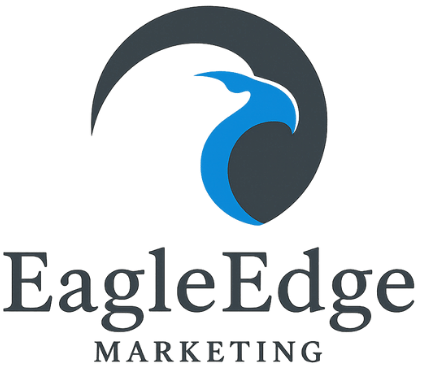Introduction
In today’s fast-moving digital world, attention spans are shrinking. Studies show that if a website takes more than three seconds to load, visitors are likely to leave. In 2025, speed is more important than ever—not just for user experience, but also for SEO rankings and overall business growth. A beautifully designed site is useless if it loads slowly. In this blog, we’ll explore why website speed matters and share practical design tips to keep your site running fast.
Speed as a Ranking Factor
Google has made it clear: speed influences SEO rankings. Since the rollout of Core Web Vitals, websites are judged on metrics like Largest Contentful Paint (LCP), First Input Delay (FID), and Cumulative Layout Shift (CLS). In simple terms, your site must load quickly, respond instantly, and remain visually stable.
Why it matters: A faster site improves your chances of ranking higher on search results, which means more organic visitors.
Example: A bakery in Arkansas with a fast-loading site will rank above a competitor with a sluggish site, even if both use the same keywords.
Design Tip: Use lightweight themes, avoid bloated code, and run frequent speed checks with Google PageSpeed Insights
User Experience & Conversion Rates
Your website is often your first impression. Research shows that a delay of even one second can reduce conversions by 7%. In ecommerce, this could mean thousands of dollars in lost revenue each year.
Why it matters: A slow site frustrates users, increases bounce rates, and lowers trust.
Example: Imagine an online furniture store where product images take 5+ seconds to load—customers will abandon the cart before even seeing the product details.
Design Tip: Simplify navigation, reduce unnecessary pop-ups, and keep your design clean to minimize loading times.
Image & Video Optimization
Images and videos are essential for storytelling, but they are also the biggest culprits of slow websites. In 2025, users expect crisp visuals that load instantly.
Why it matters: Oversized media files slow down your site, especially on mobile data.
Example: Switching from traditional JPEGs to WebP can cut file sizes by up to 30–40% without losing quality.
Design Tip:
Compress images with tools like TinyPNG or ShortPixel.
Use responsive image sizes that adapt to different devices.
Apply lazy loading, so media only loads when it enters the user’s screen.
Just like Orion Stars boosted their online visibility by optimizing site performance. Check out the website for speed and performance.
Mobile-First Performance
With more than 70% of traffic coming from mobile devices in 2025, mobile speed is more important than desktop speed. Google’s mobile-first indexing means your mobile site is what Google primarily evaluates for rankings.
Why it matters: A site that looks good but lags on mobile is practically invisible to a large portion of users.
Example: A local restaurant’s site with heavy desktop-style sliders will frustrate mobile users, leading them to competitors.
Design Tip:
Use mobile-friendly layouts and buttons.
Test performance on multiple devices.
Optimize touch interactions and avoid desktop-only features.
Lightweight Design Practices
While flashy features like animations and parallax effects can look great, they often slow websites down. In 2025, the trend is moving toward minimalist, performance-driven design that balances aesthetics with speed.
Why it matters: A site overloaded with effects can distract users and hurt performance.
Example: A consultancy website with simple, bold typography and minimal visuals can load twice as fast as a competitor using heavy scripts.
Design Tip:
Avoid unnecessary plugins.
Use clean code and efficient frameworks.
Implement caching and Content Delivery Networks (CDNs) to deliver content faster globally.
Conclusion
Website speed in 2025 is no longer just about convenience—it’s a business necessity. A slow website can hurt your SEO, drive away potential clients, and reduce conversions. On the other hand, a fast website enhances user experience, boosts rankings, and increases sales.
By focusing on speed-conscious design practices—like optimizing images, building mobile-first layouts, and keeping your site lightweight—you can give your business a clear competitive edge.
At EagleEdgeMarketing, we specialize in designing fast, user-friendly, and SEO-ready websites that help small businesses grow. If your site feels slow or outdated, it’s time for a redesign that puts performance first.
Faq On Website Speed Optimization
What is considered a good website loading speed in 2025?
A good loading speed is under 2 seconds. Anything beyond 3 seconds risks higher bounce rates and lower user engagement.
Does website speed affect SEO rankings?
Yes. Google and other search engines factor page speed into their ranking algorithms. Faster websites are more likely to appear higher in search results.
How does slow website speed affect conversions?
Studies show that even a 1-second delay in load time can reduce conversions by up to 7%. In 2025, when users expect instant experiences, speed is directly tied to sales and leads.
What factors slow down a website?
Common culprits include unoptimized images, too many plugins, large JavaScript files, slow hosting servers, and lack of caching or a CDN (Content Delivery Network).
How can I test my website speed?
You can use free tools like Google PageSpeed Insights, GTmetrix, or Pingdom to measure loading times and get suggestions for improvements.
What’s the role of Core Web Vitals in 2025?
Core Web Vitals (Largest Contentful Paint, First Input Delay, and Cumulative Layout Shift) remain crucial benchmarks for speed and user experience. Google continues to prioritize these metrics in rankings.





